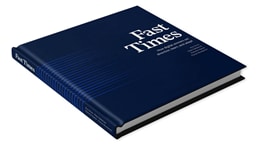In 2011, Jennifer Pharr Davis hiked the 2,185-mile Appalachian Trail in 46 days, 11 hours, and 20 minutes, maintaining an average of 47 miles per day. Hers was the fastest known time (male or female) for completing the trail at the time. The first woman to achieve that mark, Jennifer battled weather, illness, and her own doubts to shatter the record. Jennifer is the founder and owner of the Blue Ridge Hiking Company, a guiding service that strives “to make the wilderness accessible and enjoyable” for hikers of all ages, genders, and ability levels.
Tapping into your inner voice
When I went for the record (for the fastest completion of the Appalachian Trail), the consensus was that I was crazy, overconfident, or egocentric. Traditional hikers are purists, and many of them thought I couldn’t enjoy the hike and was somehow betraying what hiking was about. I faced a lot of criticism, so it was important to be in touch with what I felt and what my motivations were. I knew what I could do but all of those outside voices created doubt.
Most people struggle with insecurity, and still face self-doubt even after they’ve proven themselves. That inner voice is very helpful to combat doubts, and I turned to it often. Everyone has that inner voice and inner drive, but it often gets muscled out. People need to carve out time to listen to that inner voice because it’s an important resource.
Micro goals
During my hike, I was completely focused on micro goals—the overall goal was simply too overwhelming, until the very end at least. Knowing the trail pretty well (from previous hikes) helped because I could set out specific goals, such as an upcoming crossing or mountain. That specificity helped me to stay present and focused.
I ended up breaking up my goals into three parts: My morning goal, my afternoon goal, and my evening goal. Because even the goal of the end of day was 45 to 50 miles away, and that was pretty far off. I found that if I have a big goal that’s a couple of days or a week out, it’s easy to get distracted or feel that you have plenty of time. But if you have something that’s much shorter, you’re much more likely to hit it. I’ve become good at dividing time into short blocks.

Fast Times: How digital winners set direction, learn, and adapt
The power of letting go
I started the hike in Maine and New Hampshire, which is the hardest terrain of the entire trail. I got shin splints, then hit a sleet storm in New Hampshire, got hypothermia, and then by the time I got to Vermont, I was pretty sick. I was way behind the record pace and I just wanted to quit. When I met my husband at an agreed road crossing, I told him, “I’m done.” He said, “You feel too bad to make a good decision right now. Keep going until tomorrow, and if you want to quit then, that’s ok.” He was right. I kept going that day, and my medicine kicked in and I started to feel better.
This was really a huge shift for me because after that, I thought I had a zero percent shot of getting the record. And I considered quitting. But I realized that I was out there not to be the best but to find my best. So I let go of the record, and realized how oppressive the record had been. When I was going 40 to 50 miles every day, I never felt it was good enough. I was always comparing myself to other record holders, and focusing on the numbers. I was losing energy through anxiety about those comparisons, and I was losing miles to fear of failure.
And I just let all that go. As soon as that happened, my miles went up and my enjoyment went up. I took ownership of the experience.
Openness to failure opens boundaries
All of the major trails I’ve been on have a higher failure rate than finish rate. But I’ve learned that a willingness to fail opens me to doing more things. If you really are afraid of failing, then you wouldn’t hike at all.
In the same way, I now recognize the need to take risk because if I stagnate or become complacent, I know I won’t make it long term. That was true of my hike, and it’s true of my business today. Part of taking risk for me is about trusting myself and trusting other people. Bad things might happen, but the fact that I believe in what I do, and I believe generally in the good of humanity, helps me take risks. We spend lots of time avoiding fear, but it creates lots of boundaries.
Breaking out of self-imposed limits
I hate when I recognize that I’m being limited by gender or background, and I realize that I’ve done it to myself multiple times in life. For me, when I was training, my mind was stuck on breaking the women’s record (for fastest hike of the Appalachian Trail). But at one point as I was training, my body started producing 40-plus mile days (of hiking) and I saw that I’d been thinking too small.
I realized you can only see what’s possible when you put yourself in different situations. For me, that was attempting to hike the complete Appalachian Trail, then thinking I should try for the women’s record, then realizing I could try for the overall record. Or when I started my own company when I was just 24. Each time you try something new, you see what’s possible.
In talking to other record holders, I was surprised how different they all were and what different approaches they had to achieve things. But the one common factor I found was that all of them had a positive faith that things or circumstances can get better.
The power of example … but know your strengths
I spoke to a lot of people before I attempted the record, and that knowledge helped. So when I got shin splints early on in my hike, for example, instead of resting—which is the recommended action—I knew that another person had hiked through shin splints and was eventually ok, so I did it too.
But you can take it too far. We had people coming in telling me how to do it (break the trail record) and I tried to emulate them, but it didn’t work. We found that it was better to take the best parts of what we learned, and combine it with our own model. It is so important to be aware of what your strengths are and to keep those.
Having those examples is really important. I was the first woman to (attempt the overall record on the AT), and now women are doing it every year.


